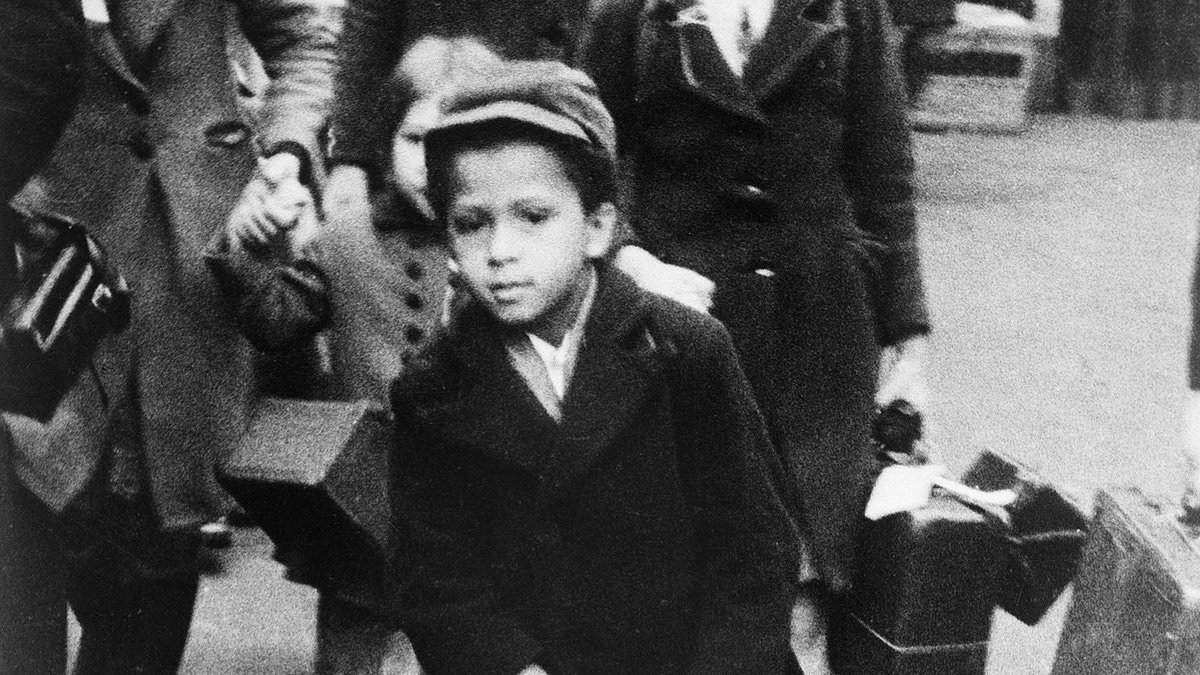With an over-sized coat around his shoulders and his meagre luggage tied to together with string, he was just one among thousands of children heading into the unknown.
But this boy, whose picture is now in the archives of the Imperial War Museum, stood out in part because he was a black youngster at a time when the nation was overwhelmingly white.
The photo – which gives a snapshot into the reality of the evacuation of children from London in the Second World War – is what inspired acclaimed film director Steve McQueen to make his new film, Blitz.
The production reveals the horror of the Nazi bombing campaign that killed 40,000 civilians devastated London and other British cities between September 1940 and May 1941.
And while viewers get to know the central character of McQueen’s film – nine-year-old mixed-race boy George (Elliott Heffernan) – the life of the evacuee in the photo remains a mystery.
McQueen told BBC Radio 4’s Front Row programme last month: ‘When I was doing research for Small Axe, I came across this photograph of this black child standing on a platform, he was being evacuated.
‘Over-sized coat, large suitcase and cap. And I thought to myself, there’s my in, because seeing him, I wanted to see it through his eyes.’
In Blitz, George lives in the working class East End of London with his white mother (Saoirse Ronan) and grandfather (rock star Paul Weller).
It is set in September 1940 – a year after Britain had declared war on Germany – and depicts George’s family deciding to send him away to somewhere safer.
He is seen being taken to the station and being put on a train, but he jumps off long before it reaches its destination and then makes his way back to London.
The youngster ends up alone in the capital as Hitler’s bombs are falling around him.
The evacuation programme, which began on September 1, 1939 – two days before Britain declared war on Germany – but continued in waves, saw the evacuation of more than 1.5million people from urban areas that were thought to be under threat.
Around 800,000 of the evacuees were children, and they were sent not just from London, but from cities including Manchester, Glasgow, Birmingham and Liverpool.
For many evacuees – particularly those sent to very rural areas – the experience of being sent away was an adventure.
But others suffered because the (often unwilling) hosts they were sent to were cruel or sometimes even abusive.
Children who arrived with lice or wet the bed were sometimes seen as symbols of working class neglect or bad mothering.
By January 1940, hundreds of thousands of evacuees had returned to their homes in target urban areas, because Britain’s conflict with Germany had not yet translated into direct fighting.
What would turn out to be an eight-month period became known as the ‘Phoney War’.
But it came to an end following the German invasion of France and the Dunkirk evacuation in May 1940.
There was then a renewed effort to get vulnerable people out of urban areas when it became more likely that bombing raids were imminent.
Just over two months after the boy who inspired McQueen was pictured in London, the Nazi Blitz began.
Between September 7, 1940 and May 21, 1941, more than 40,000 civilians were killed in wave after wave of bombing raids that struck at night, leaving devastation in their wake.
More than 20,000 tonnes of explosives were dropped on 16 British cities.
In London, the brunt of the bombs fell on the City and the East End, with the Thames guiding the bombers to their targets.
More than one million houses in London were destroyed or damaged, and more than 20,000 people died in the capital.
Other cities that were hammered included Coventry, Liverpool, Glasgow, Plymouth, Belfast and Southampton.
The Blitz came to an end in May 1941, after Hitler had given up on a plan to invade Britain had turned his sights to attacking the Soviet Union.
